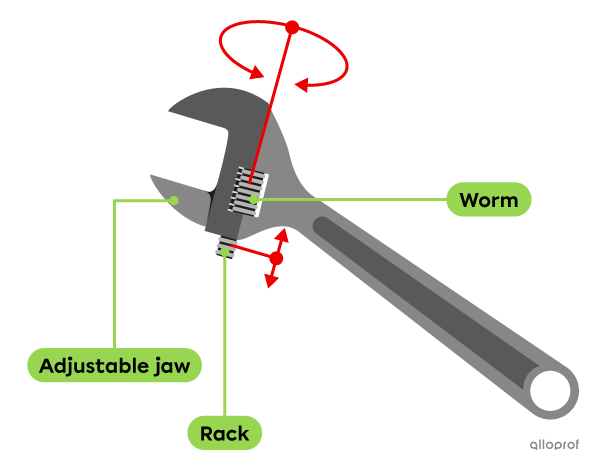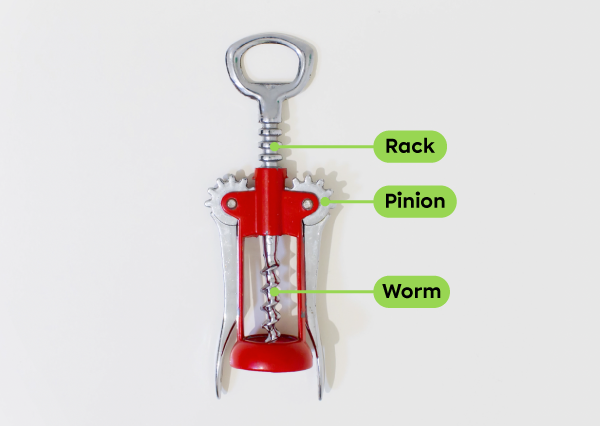A reversible system is a system where the driver component can become the driven component and vice versa.
A system is said to be reversible when its different components can perform different functions. A driver component (or driving unit) can become a driven component (or receiving unit) and vice versa.
The reversibility of a system is not related to the direction of rotation of its components.
A system where the direction of rotation can be changed is not necessarily reversible.
The following are the reversible systems studied at the Secondary level.
This gear train is reversible because both wheel gears can act as the driver or driven component.
Therefore, the rotational motion of the blue wheel gear can drive the rotational motion of the yellow wheel gear.
Alternatively, the rotational motion of the yellow wheel gear can drive the rotational motion of the blue wheel gear.
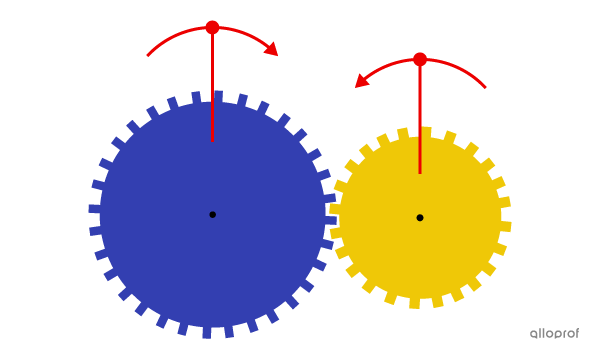
A bicycle transmission uses a chain and sprocket system. The pedal gear is called the crankset and the rear wheel gear is called the rear sprocket. The system is reversible because both the crankset and the rear sprocket can act as the driver or driven component.
Therefore, the rotational motion of the crankset can drive the rotational motion of the rear sprocket using the chain as an intermediate component.
Alternatively, the rotational motion of the rear sprocket can drive the rotational motion of the crankset using the chain as an intermediate component.
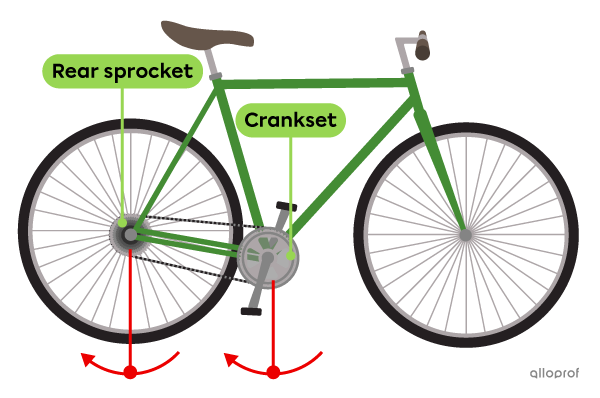
To determine if a system is reversible, the following questions should be answered.
-
Can the driver component become the driven component?
-
Can the driven component become the driver component?
If the answers are yes, the system is reversible.
If the answers are no, the system is irreversible.
The reversibility of a system can benefit the design of a technical object.
A common corkscrew uses a rack and pinion system. This is a reversible system because both the rack and the pinion can be the driver or driven component.
-
The rack is the driver component and the pinions are the driven components.
The rack acts as the driver component of the system when the worm is inserted into the cork. Here, the translational motion of the rack drives the rotational motion of the pinions.
-
The pinions are the driver components and the rack is the driven component.
The pinions act as the driver components of the system when the cork is pulled out. Here, the rotational motion of the pinions drives the translational motion of the rack.
If the system was not reversible, only one of these corkscrew functions would be possible, because the driver and driven components would not be interchangeable. Therefore, the functionality would be reduced.
An irreversible system, also called a nonreversible system, is a system that can only be activated by one component, called the driver component (or driving unit).
In an irreversible system, the driver role can be assumed by only one component.
If a force is applied to the usually driven component, the component that is usually driving will not move. In most cases, the system will lock in place.
The following are the irreversible systems studied at the Secondary level.
A worm and worm gear system is usually irreversible. In most cases, only the worm can be the driver component.
However, there are certain mechanisms where the worm and worm gear system is reversible. To achieve it, the teeth on the worm gear have to be angled in a specific way.
A glue stick uses a screw gear system (type I). It is an irreversible system because only the screw can be the driver component, while the nut, attached to the glue support base, is always the driven component.
Therefore, the rotational motion of the screw drives the translational motion of the nut.
However, pushing on the glue and the support base does not drive the rotational motion of the screw. No motion occurs because the system is locked.
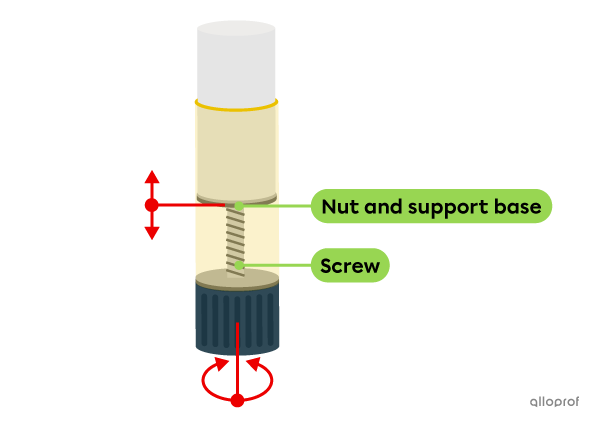
To determine if a system is irreversible, the following questions should be answered.
-
Can the driver component become the driven component?
-
Can the driven component become the driver component?
If the answers are yes, the system is reversible.
If the answers are no, the system is irreversible.
The irreversibility of a system can benefit the design of a technical object.
An adjustable wrench uses a worm and rack system. It is an irreversible system because only the worm can be the driver component and the rack of the adjustable jaw is always the driven component.
Therefore, the rotational motion of the worm drives the translational motion of the rack.
However, pushing or pulling on the adjustable jaw does not drive the rotational motion of the worm. No motion occurs because the system is locked.
The irreversible nature of this system is an advantage in the adjustable wrench because the mechanism locks itself. The adjustable jaw will not move unless a force is applied to the worm.
